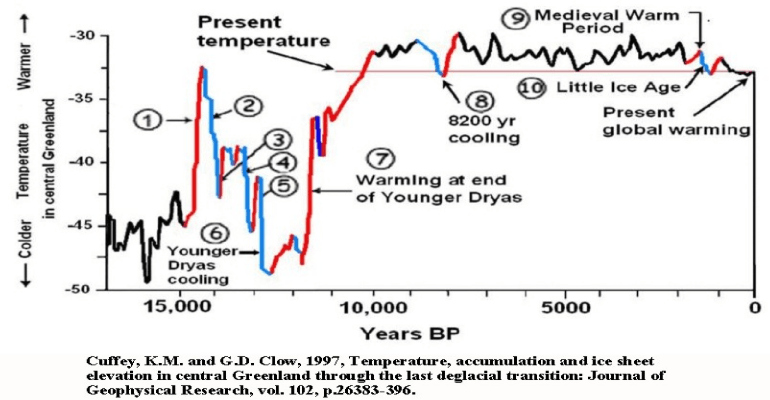
The propaganda press has been speculating on whether or not 2014 would be the warmest year ever. 2014 was certainly the warmest year in the last two years. The data are now in so we no longer have to speculate.
Some temperature data is based on surface stations, but those data are subject to many confounded problems that tend toward a warming bias, i.e., the Urban Heat Island effect. See my Wryheat post, The State of our Surface Temperature Records which list some problems with our temperature records.
There are also two satellite systems which measure a calculated temperature for the lower troposphere. These are regarded as a more accurate measure of global temperature.
In 2014, the Remote Sensing System (RSS) of satellites put 2014 as tied for sixth warmest since 1979. See graphs and commentary by Paul Homewood here. He writes, “RSS satellite data is now published for December, and confirms that global atmospheric temperatures for 2014 are nowhere near the record being touted by NOAA and NASA.”
The other satellites system is run by the University of Alabama at Huntsville (UAH). They put 2014 as “the third warmest year in the 36-year global satellite temperature record, but by such a small margin (0.01 C) as to be statistically similar to other recent years, according to Dr. John Christy, a professor of atmospheric science and director of the Earth System Science Center at The University of Alabama in Huntsville 2014 was warm, but not special. The 0.01 C difference between 2014 and 2005, or the 0.02 difference with 2013 are not statistically different from zero. That might not be a very satisfying conclusion, but it is at least accurate.”
Dr. Roy Spencer, of UAH, explains why the satellite systems may come up with different numbers here. The basic reason is that “there is not a single satellite which has been operating continuously, in a stable orbit, measuring a constant layer of the atmosphere, at the same local time every day, with no instrumental calibration drifts.”
Over at Real Science, Steven Goddard proclaims “2014 Was The Least Hot Year On Record In The US” because 2014 “recorded the smallest percent of stations to reach 90 degrees in US history. Only 84% of US HCN stations reached 90 degrees. This was the first year when more than 15% of stations failed to reach 90 degrees any time during the year.”
A few days ago, Tony Davis of the Arizona Daily Star got into the propaganda business with this article “Tucson’s record warmth ‘consistent’ with climate-change forecast.” The term “consistent with” is, in my opinion, a weasel word that implies much but fails to prove anything. Late in the article Davis admits that the high temperature average for 2014 was due mainly to hotter minimum temperatures at night: “But hotter nights were the bigger drivers of 2014’s record warmth.” This is a signature of the Urban Heat Island Effect. Our asphalt and concrete is warmed during the day and radiate heat at night. (For more on UHI see Urban heat island effect on temperatures, a tale of two cities)
Finally, let’s put things in a longer perspective and look at global temperatures for the past 10,000 years. Given that perspective, it looks like 2014 was about the 8000th warmest year, give or take 1,000 years.

